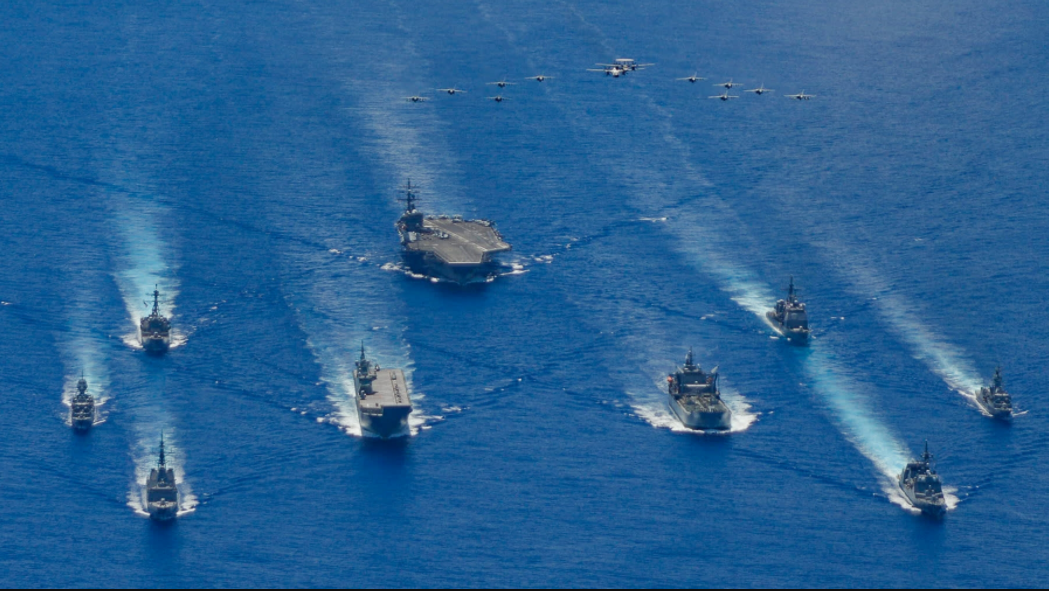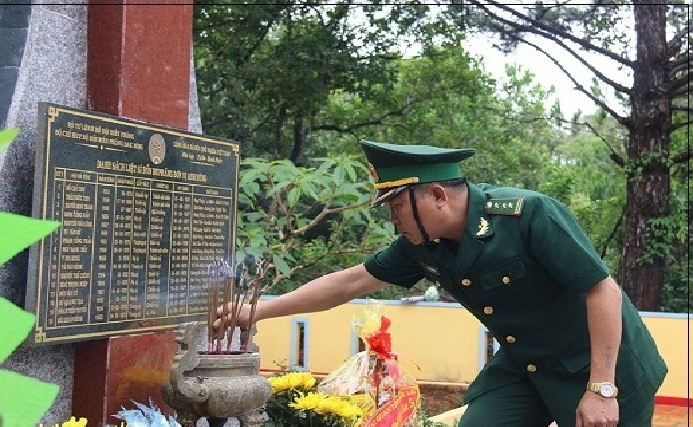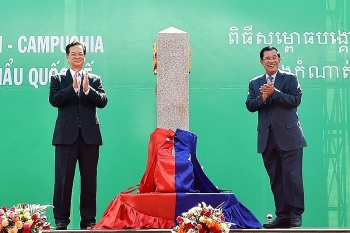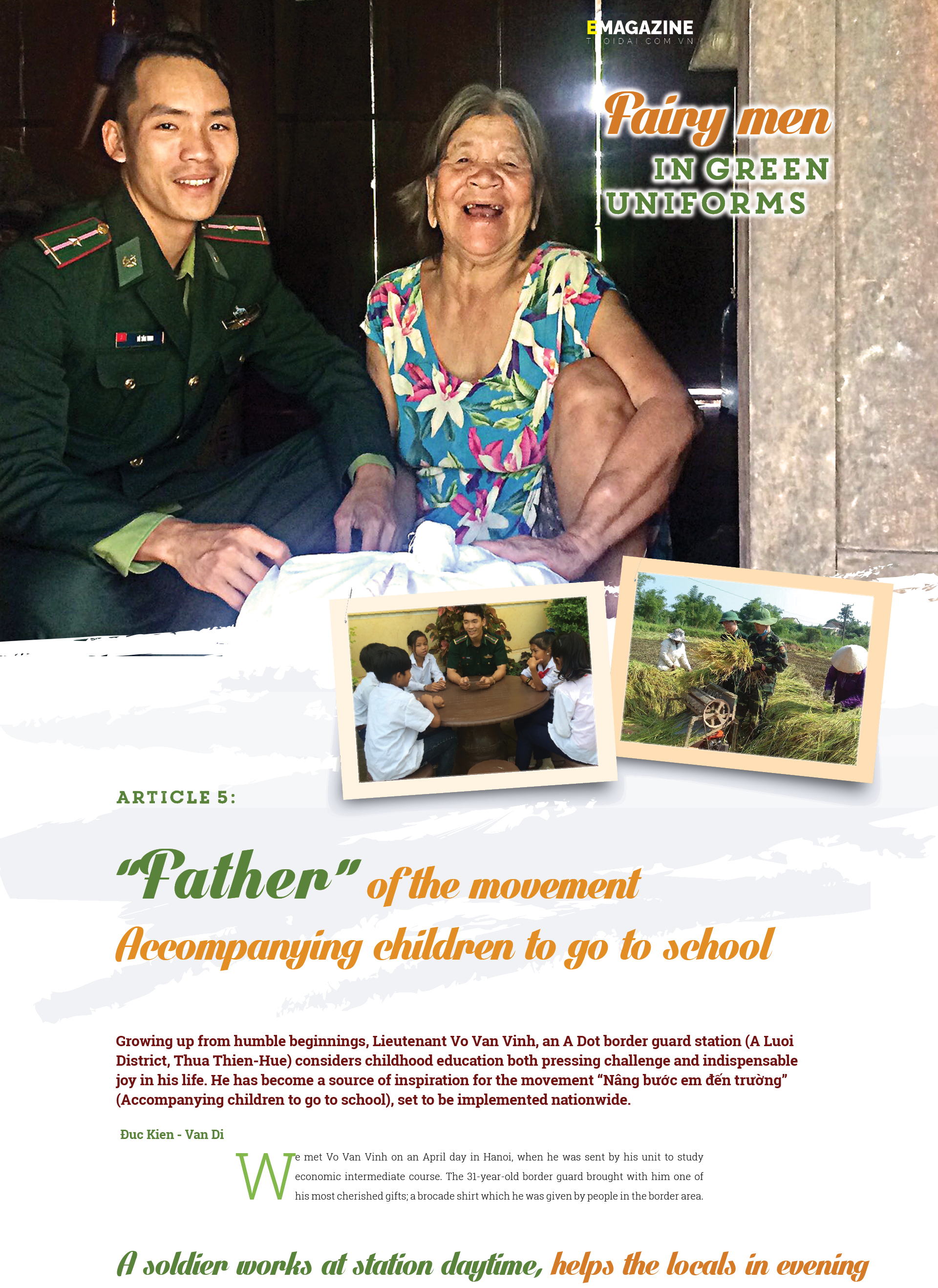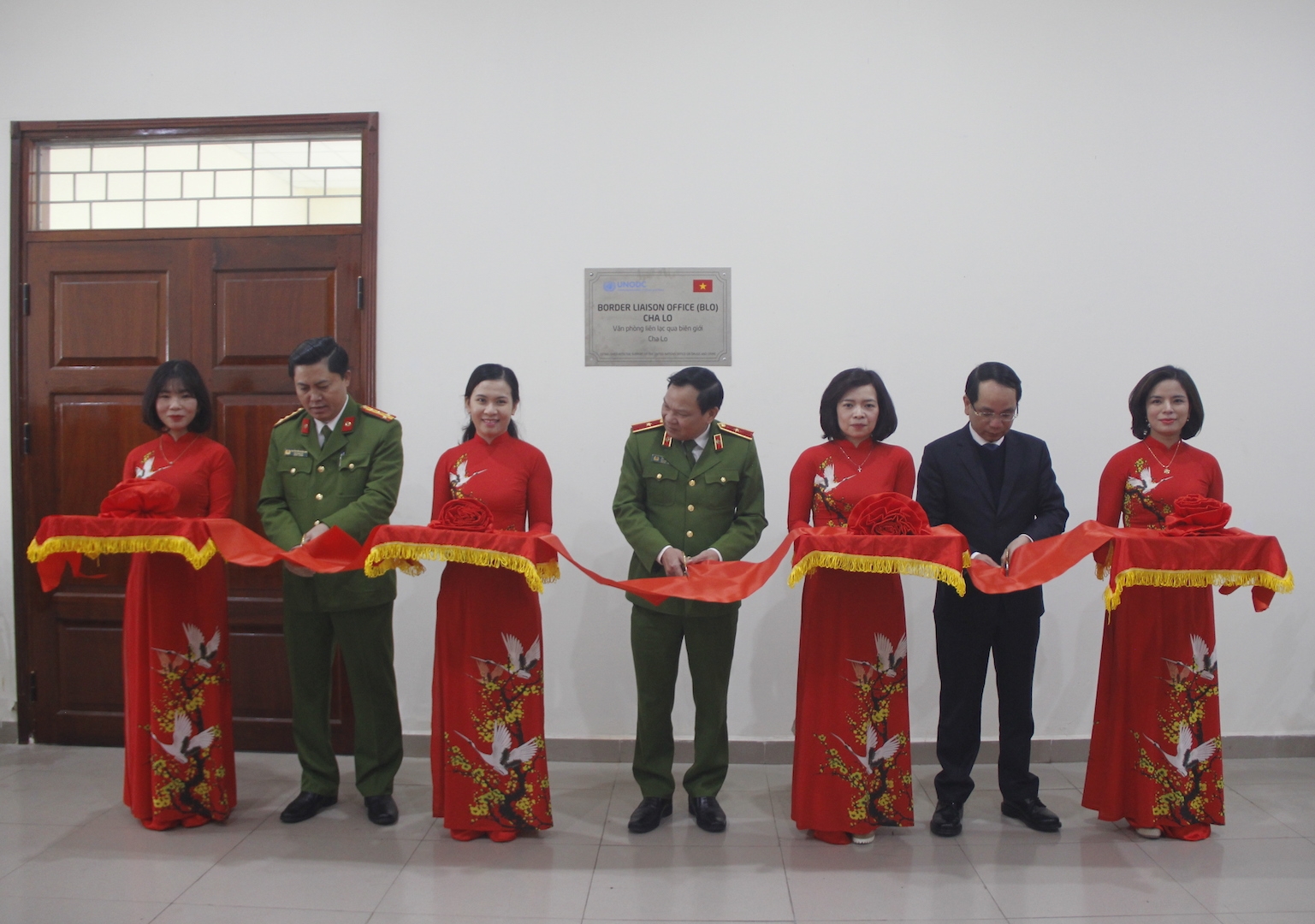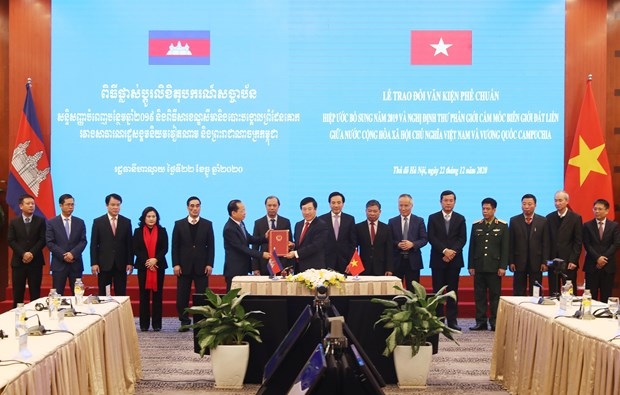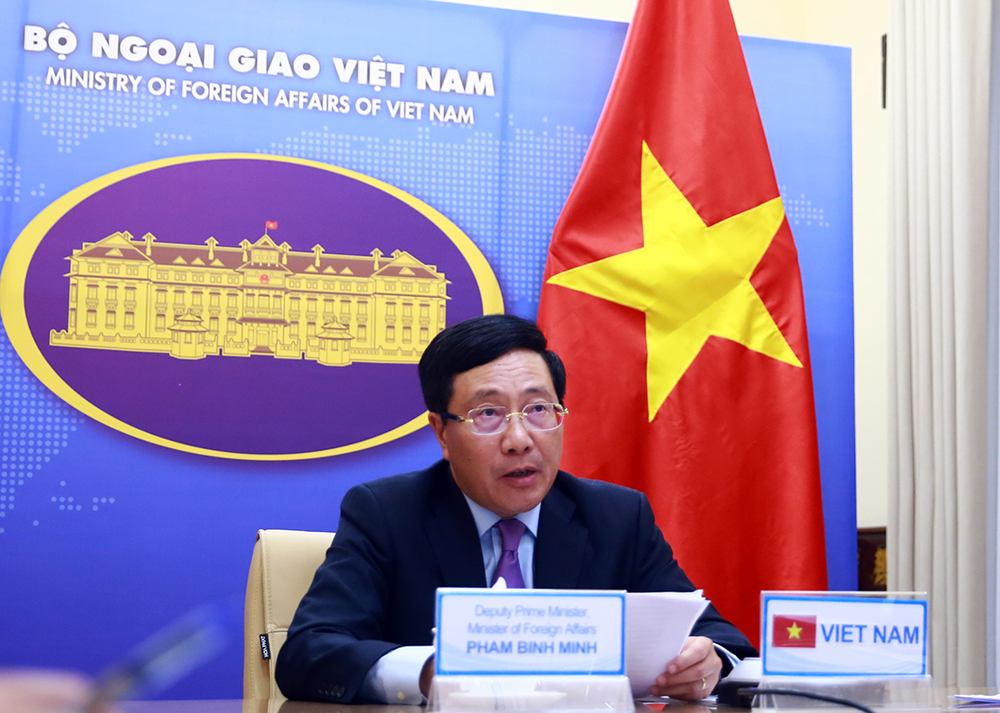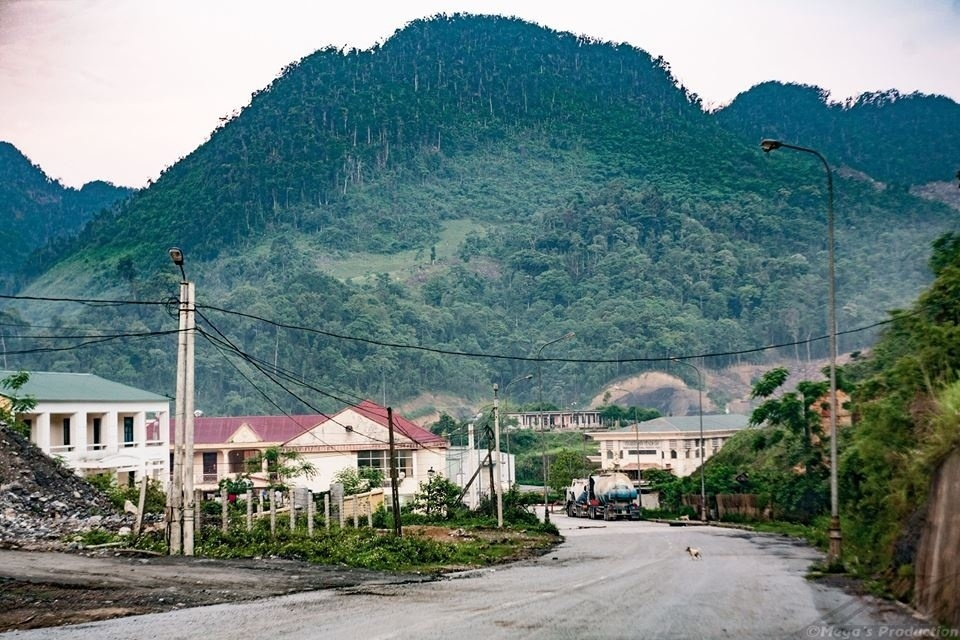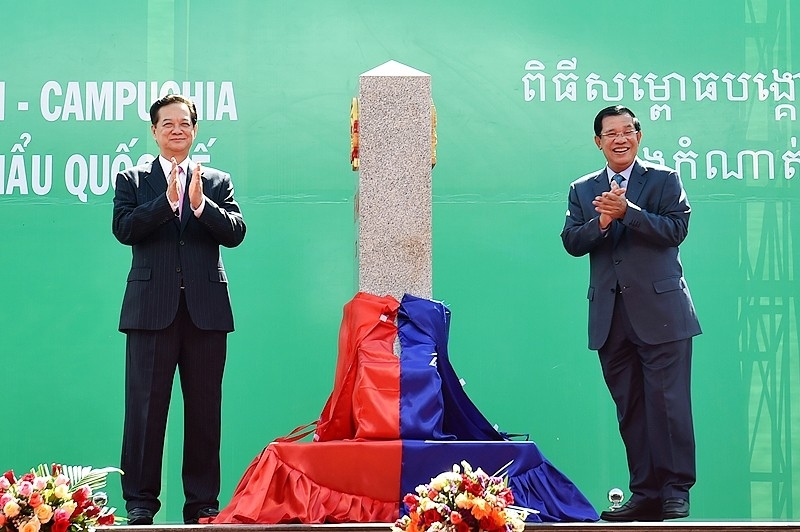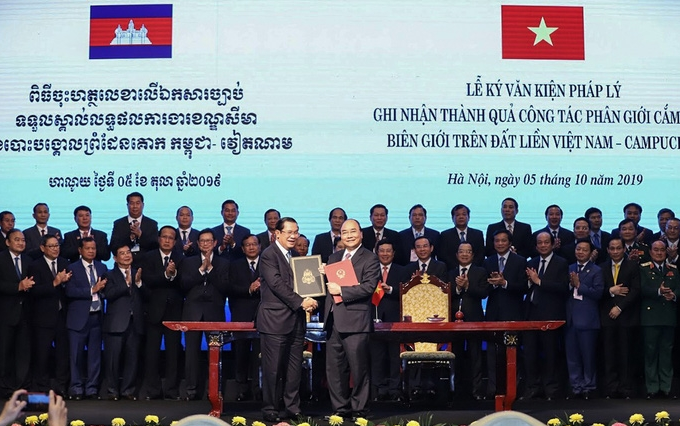Vietnam - Laos Boundary in 1945 - 1975
Focus on the resistance
The border and territorial issue is important for both Vietnam and Laos. The settlement of the border and the territory is also a new matter that takes time and requires the focus of both sides. Border negotiation and settlement during the most drastic period in the war against the US is inappropriate. Therefore, during this period, the two sides only conducted one round of negotiation from September 16 to October 2, 1957 and no agreement was reached.
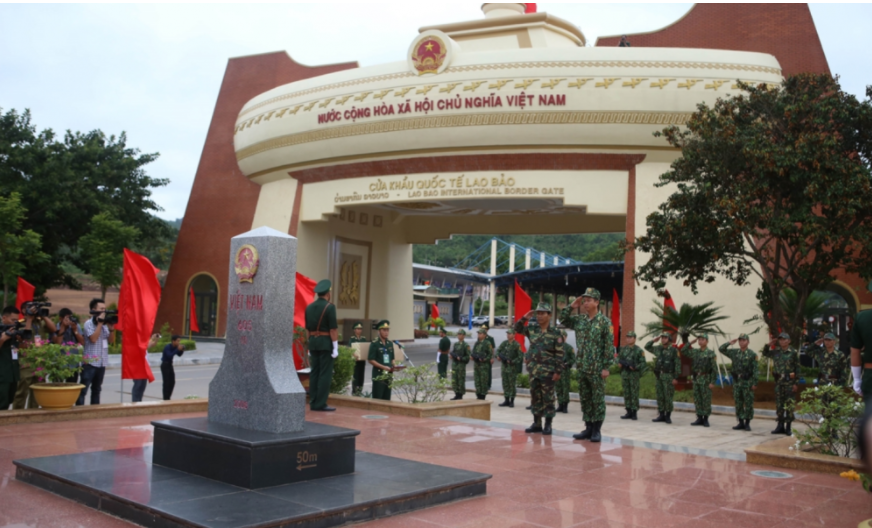 |
| Joint patrol at the National milestone No. 605 in Vietnam - Laos border. (Photo: VNA) |
During this period, Vietnam - Laos borderland had characteristics as follows:
- The borderland between the two countries has been formed for a long time, but many major changes have occurred. When the French colonialists ruled Indochina, they redefined the territory between countries within Indochina and officially determined the administrative boundaries between these countries on the map.
- When Vietnam and Laos seized independence, the administrative boundary between Ai Lao and the two regions of Tonkin (also known as Bac Ky) and Annam (known as Trung Ky), which were demarcated by the French authorities, naturally became the border-left by history between the two countries Vietnam and Laos. However, this borderline is not an international border negotiated and signed by two independent countries that have sovereignty and in fact, there are still many unclear points.
- After gaining independence, the successive administrations of Vietnam and Laos repeatedly discussed and negotiated border issues, but due to many objective and subjective conditions, they reached no agreement.
Border planning and negotiation process in 1976-1977
In 1975, Vietnam unified the country and Laos also declared their victory across the country. Now, two countries have favorable conditions for settling their border issue. However, to solve a very complicated issue like the territorial border, two sides must agree on and establish principles for their negotiating and settling process. With the need to clearly plan the border between the two countries in accordance with international law and practice, with the characteristics of the Vietnam-Laos borderline, the Politburo of the Communist Party of Vietnam took the lead to reject all views on historical and traditional borders. The party took into consideration the borderline that was actually managed under the French colonial rule and has been shown on the French map as a basis for planning the border between two countries, in accordance with the Uti-Possidetis principle of International law and practice.
;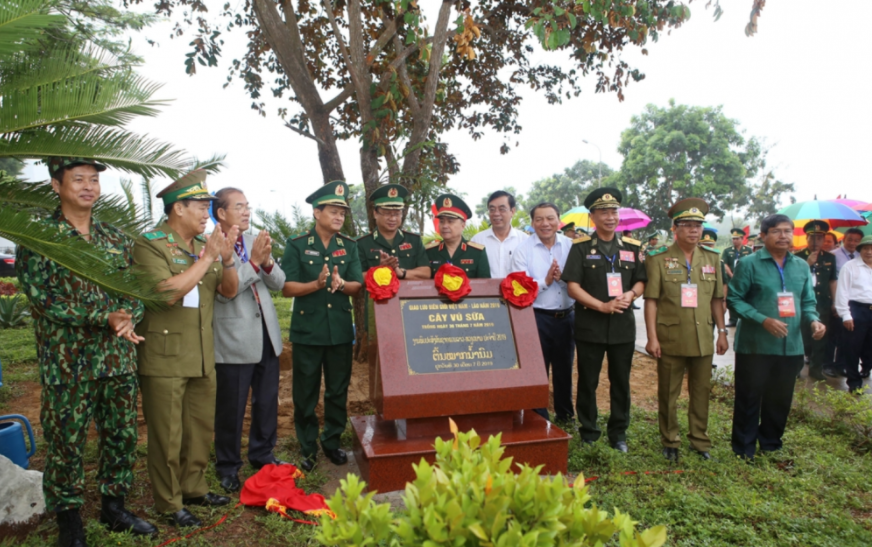 |
| Planting souvenir tree. (Photo: VNA) |
In February 1976, during the annual talk in Hanoi between the Central Politburo of the two Parties on the Vietnam-Laos border issue, the Vietnamese Politburo proposed the settlement principle: "Take border on the French map (printed) in 1945 when our two countries declared independence as the main base. Anywhere not shown in French map printed in 1945, both sides will use the French map before or after that.”
Both sides agreed on the principle and basic content of border settlement as follows:
- The basis for settlement: “Take the French Bonne map (ratio 1/100,000) printed in 1945 when the two countries declared independence as the main base. Anywhere were not shown in the French map printed in 1945, take a printed map before or after that a few years”.
+ Land that Vietnam borrowed from Laos: Vietnam will immediately return to Laos all clear areas; for unclear areas, the two sides will investigate and then report to the two Politburos for settlement.
+ Areas where borderlines are not suitable for management in practice: Both sides will immediately settle some areas back to Vietnam or to Laos; for other unclear areas, two sides will study and continue to resolve.
+ Population matter: Party which first managed the area is now responsible for communicating and advising local people to stay, and both sides must respect their right to freely choose their nationality and place of residence. People will have new citizenship if they stay or they will have the right to go to the other side if they desire.
Implementing the policy of both Politburos issued at the meeting in February 1976, two delegations of the Central Party and the Government of Vietnam and Laos negotiated in 04 rounds in a total of 90 days in a period of over nine months from March to December 1976 to settle the Vietnam-Laos border and finally agreed on the entire 2067km borderline between the two countries. Ultimately, two countries keep the 1734 km borderline on the French map and make changes in the 333km borderline compared to the French map.
On January 15, 1977, the two delegations of Vietnam and Laos continued to meet in Vientiane to jointly draft the Treaty on National Border Planning.
The two sides used 48 pieces of the French Bonne printed map (ratio 1/100,000), which was collated and signed by experts of the two delegations to depict the borderline in the treaty document and demonstrate the official borderline on the geographic map that both sides agreed on.
Regarding the content of the Treaty, two sides agreed on the order of contents and core principles such as the principle of planning the border between the two countries; the principle of describing the borderline from North to South; the principle of describing border lines along border rivers and streams, borders on bridges and across alluvial isles; the principle on the establishment and operation of the United Demarcation Committee.
On July 18, 1977, the Treaty on national border planning between the Socialist Republic of Vietnam and the Lao People's Democratic Republic was signed in Vientiane.
On September 15, 1977, the aforementioned Treaty was ratified by the Standing Committee of the National Assembly of the Socialist Republic of Vietnam and on October 25, 1977, the Supreme People's Council of Lao PDR ratified the treaty.
On October 31, 1977, in Hanoi, Minister of Foreign Affairs of Vietnam Nguyen Duy Trinh and Minister of Foreign Affairs of Laos, Comrade Phun Xi Pa Xua represented governments of the two countries to exchange ratification letters of the treaty on national border planning between the two countries. The treaty was officially effective.
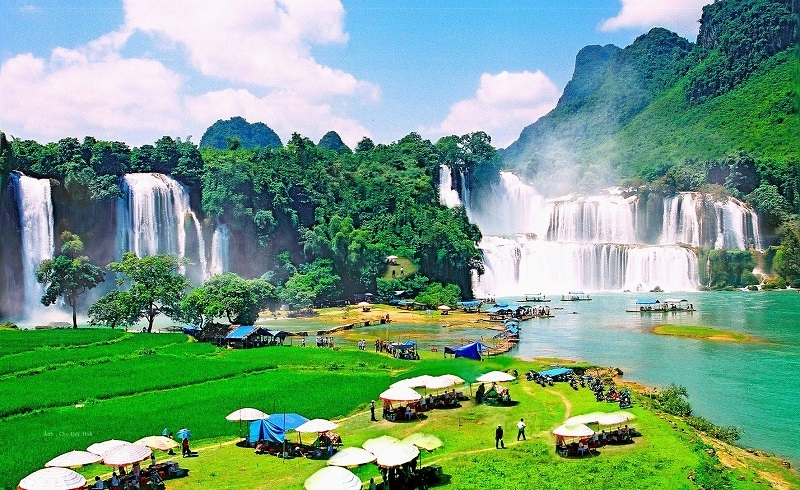 | Demarcating Ban Gioc Waterfall In accordance with 1887 and 1895 Sino-French convention as well as international practices, the median of the main flow of the Ban Gioc waterfall was ... |
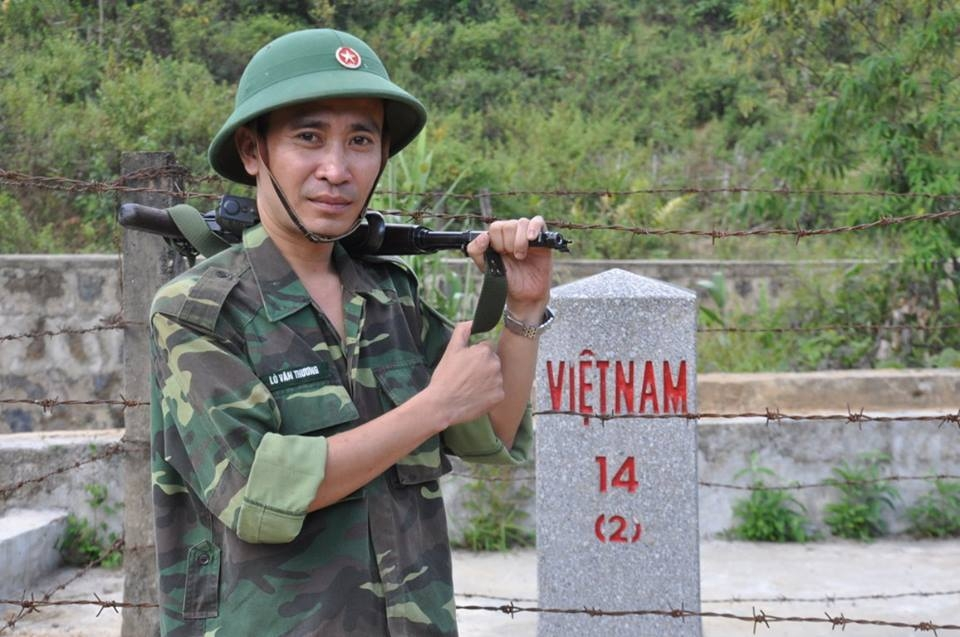 | Vietnam-China Border Management, Cooperation And Struggle History has shown that, at all times, the relation with the neighboring country need dexterity, flexibility, but equally strong-mindedness. |
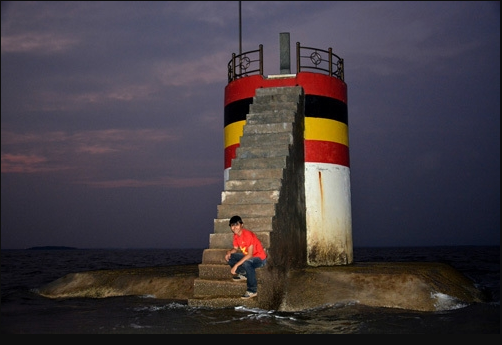 | The Definition of National Territory and Border In this article, the author - Dr. Tran Cong Truc, shall discuss basic definitions relating to national borders. |
In topics
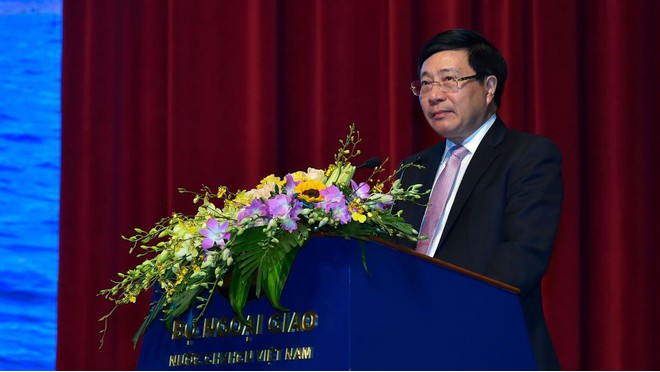 National
National
"Our coast is long, beautiful, we have to know how to keep it ..."
Recommended
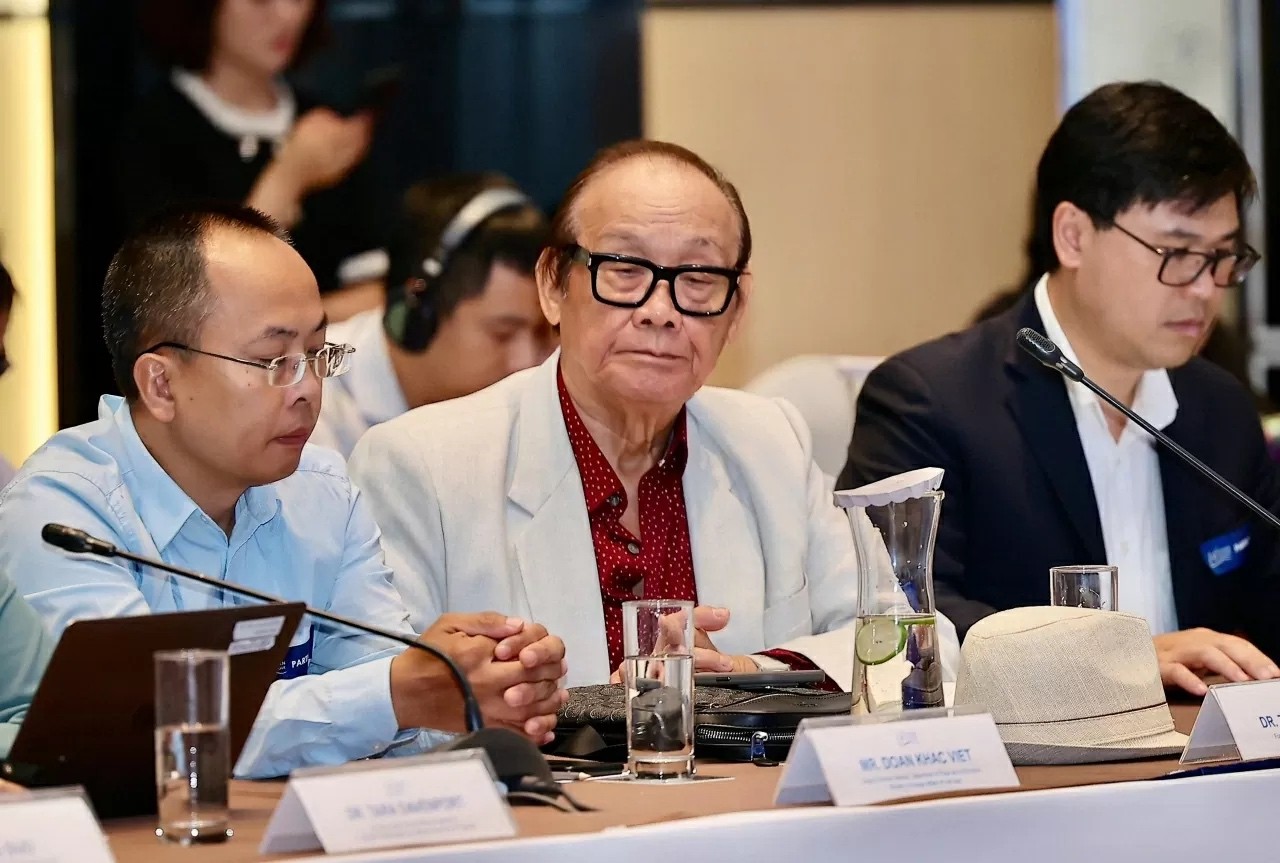 Seas and islands
Seas and islands
Vietnam Endorses Common Voice on Ocean Jurisdiction
 Seas and islands
Seas and islands
Dialogue as Key to Settling Disputes and Advancing Law of the Sea
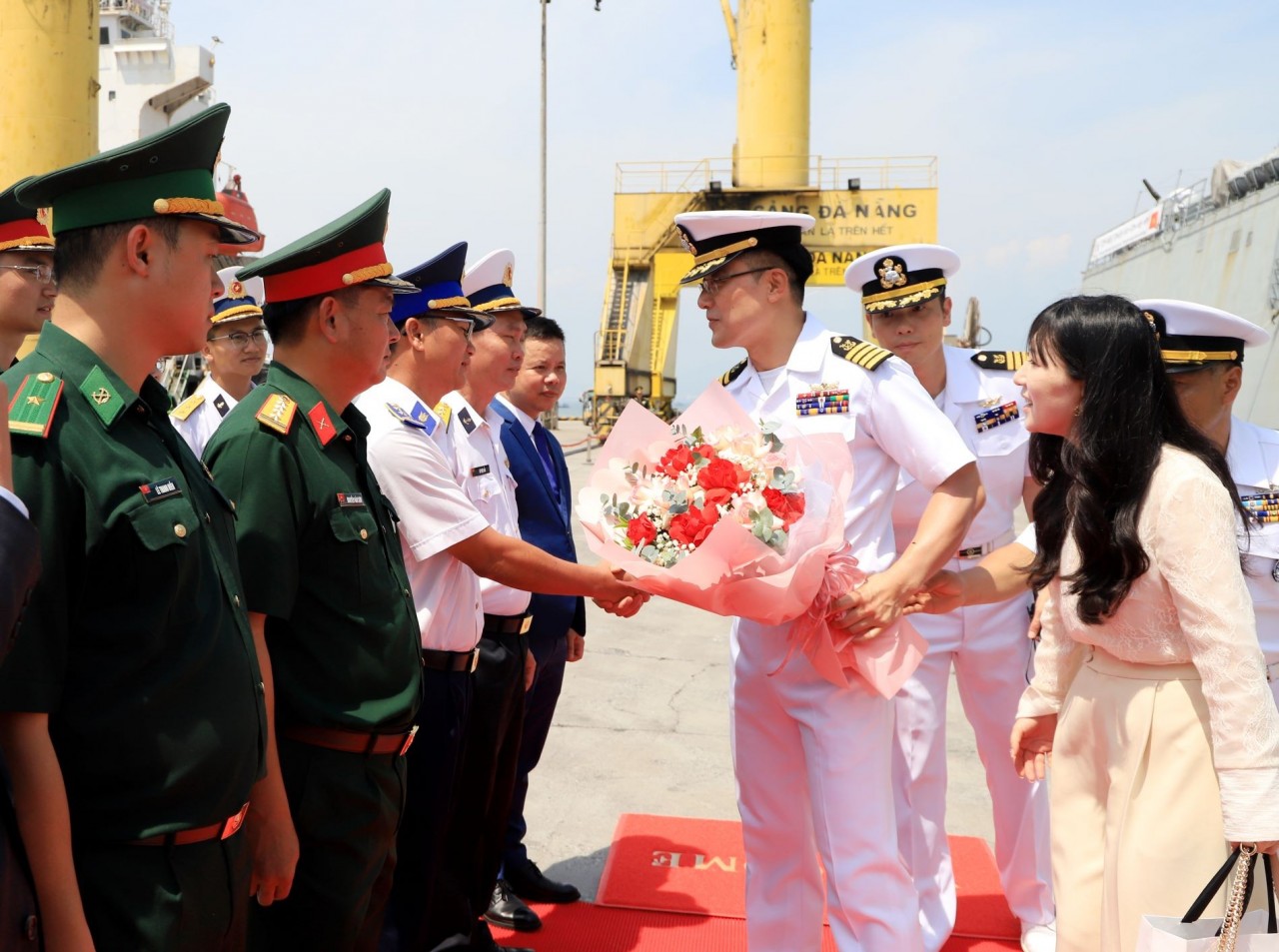 Seas and islands
Seas and islands
RoK Navy Ship Pays Friendly Visit to Da Nang City
 Seas and islands
Seas and islands
Naval Region 5 Promotes Reading Culture, Fosters Patriotism
Popular article
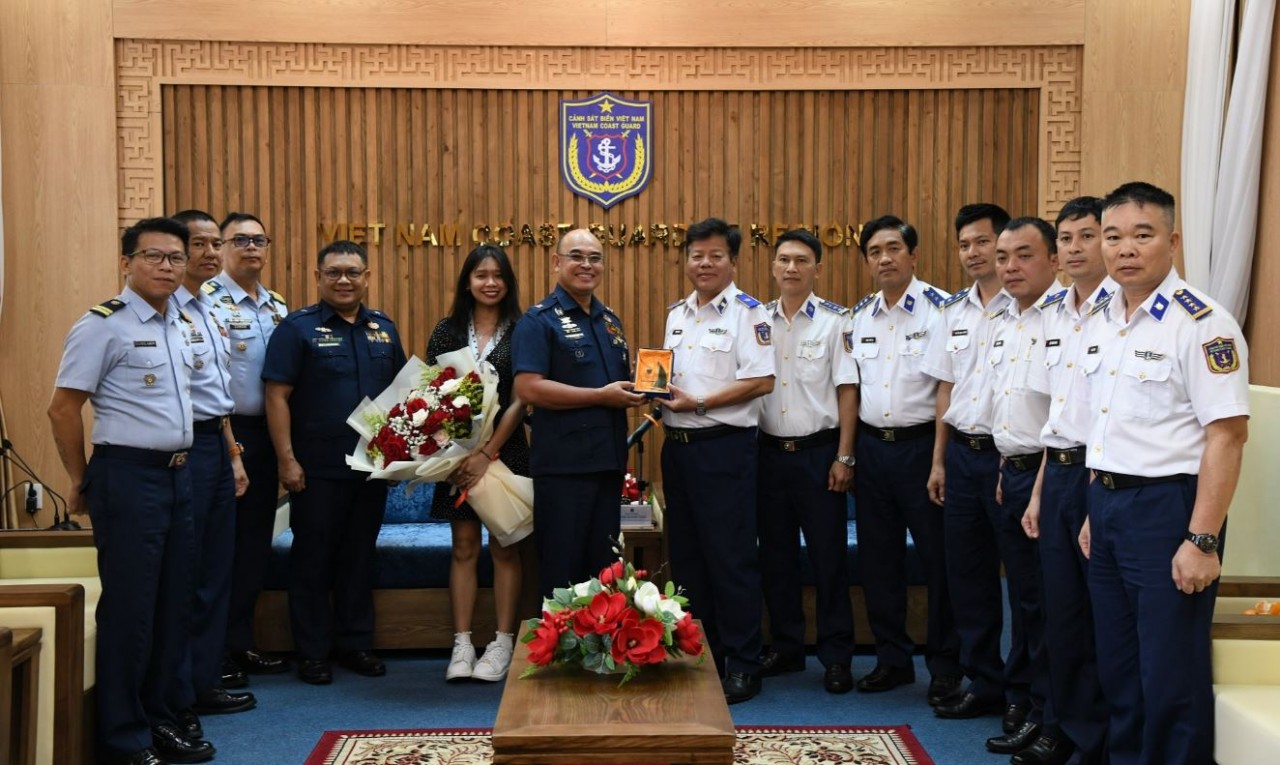 Seas and islands
Seas and islands
Coast Guard Region 2 Command Hosts Philippine Coast Counterpart
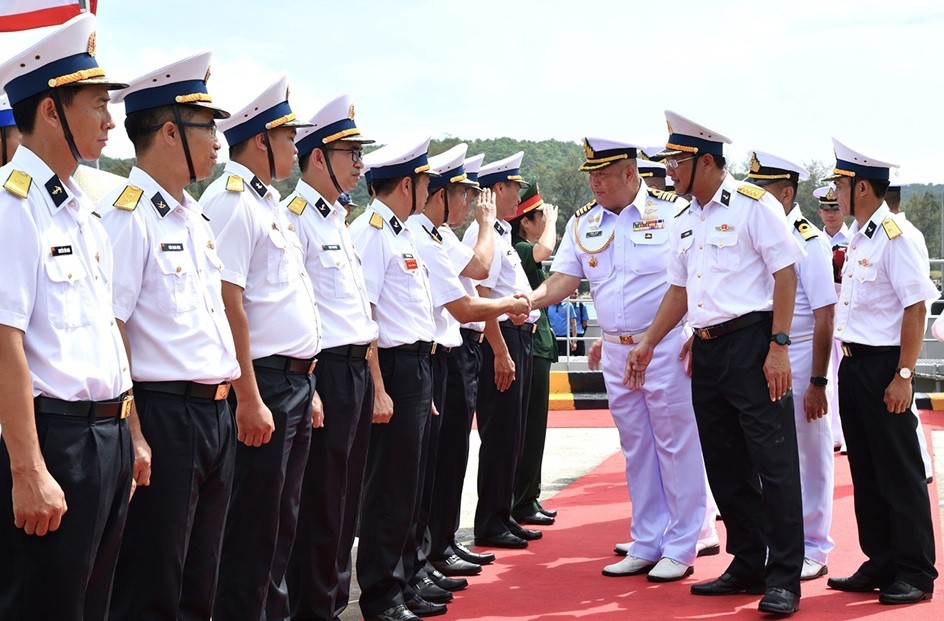 Seas and islands
Seas and islands
Vietnam - Thailand Navy: Coordination to Well Address Problems at Sea
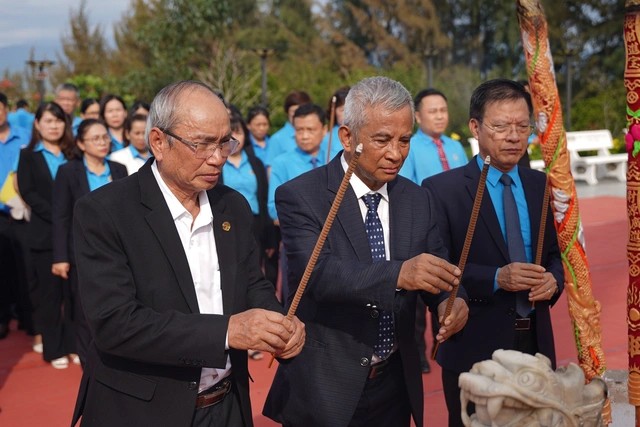 Seas and islands
Seas and islands
Honoring the Fallen: Incense Offering for the 37th Anniversary of Gac Ma
 Seas and islands
Seas and islands

